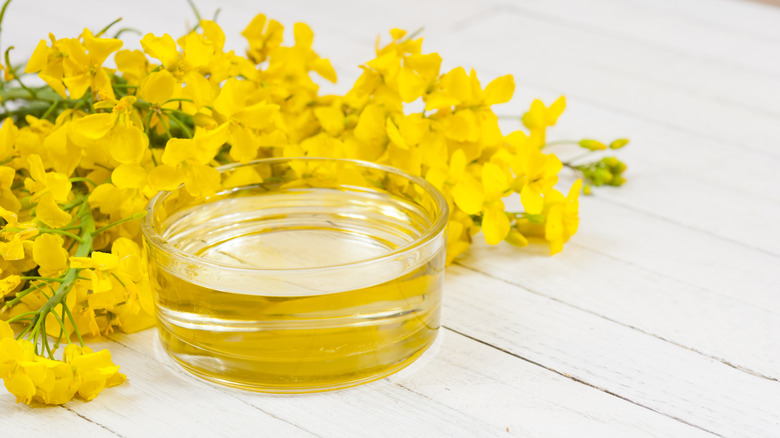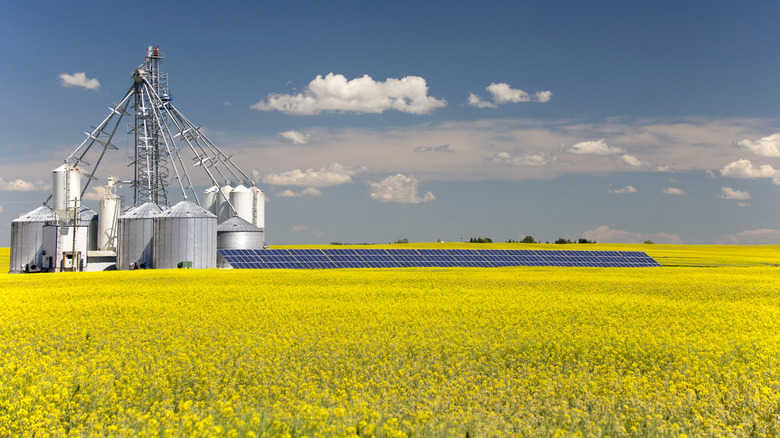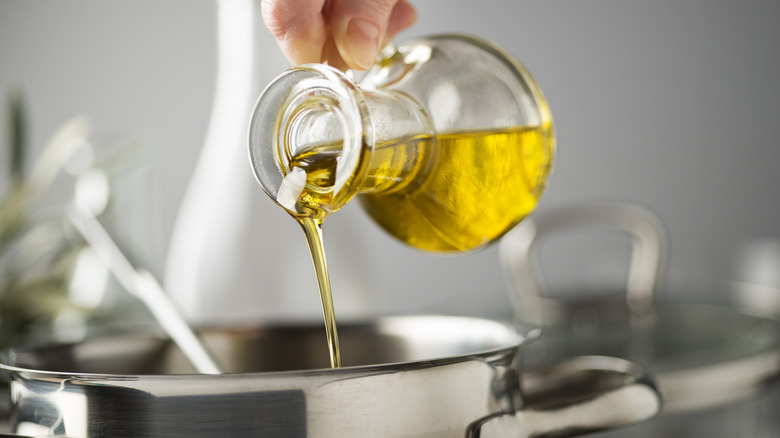The Country That Dominates Canola Oil Exports
Canola oil is one of the most versatile bio-products on the market, serving as everything from cooking fat and cosmetic ingredient to, like corn, a renewable source of fuel. As a result, the bright yellow flowers aka canola crop are grown in massive quantities around the world each year. According to the U.S. Canola Association, in 2022 alone, the United States churned out almost 4 billion pounds of canola, mostly in the Northern Plains. And we're not even the biggest producer of this liquid gold — sorry to say that we barely crack the top 10! Close to where it's grown in the U.S., right across our northern border to Canada, is where you'll find most of it.
Not unlike the U.S., Canada allocates a vast amount of land to farming — roughly 154 million acres, and with a considerable portion of that, the Canola Council of Canada reports that the country produces a staggering 20 million tons of canola each year for domestic use and exports.
How Canada became the biggest canola oil exporter
Though canola oil seems ubiquitous today, it was born and bred in Canada mere decades ago. A result of selectively bred rapeseed, canola—a contraction of Canada and ola (oil)—first appeared in the 1970s. With a crop easy to grow, harvest, and use, Canada quickly developed a booming industry both in and out of the country. In 1985, its use was recognized as safe in the United States, opening canola oil's door to a large market. Today, only 10% of the canola grown in Canada stays there; the rest goes to export markets. It is no wonder the Canola Council of Canada hails it a "'made-in-Canada' success story and the foundation of a thriving, sustainable industry."
The canola crop is very adaptable, meaning it can grow in various climates. China, India, and Australia, for instance, also host canola fields that stretch vast swaths of land, but no country has become as specialized for canola production as its homeland. Around 43,000 Canadian farmers seasonally dedicate their land to the crop.
Canada's commitment to canola oil is well deserved
One of the main reasons canola is so readily available is that it is easy to produce in large quantities. Many farmers will rotate it with other common crops, like soybeans and wheat, because it requires no extra equipment to grow and its roots help loosen the soil. Once the canola is harvested, the oil is extracted through a simple pressing process and further refined based on its intended use.
Canola is not only easy to obtain but also useful in many cooking contexts. With its neutral flavor and high smoke point, it can serve almost any recipe, whether it is greasing your pan, moistening your cake mix (not that you always need it), or blooming your spices. What's more, canola has a solid nutritional profile. It is high in heart-healthy monounsaturated and polyunsaturated fats and a good ratio of omega-6 and omega-3 fatty acids. It is also a good source of vitamins K and E. The next time you reach for the bright yellow bottle of canola oil in your pantry, remember to thank Canada.


